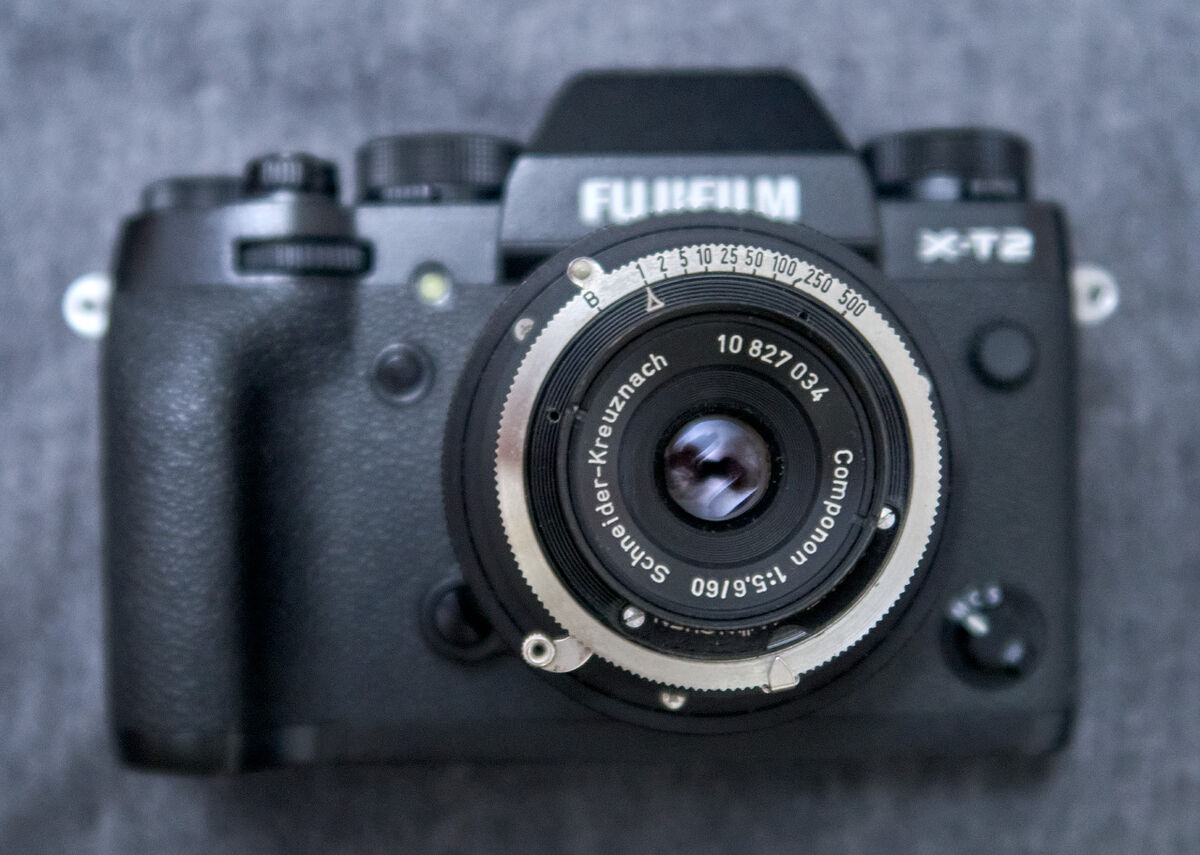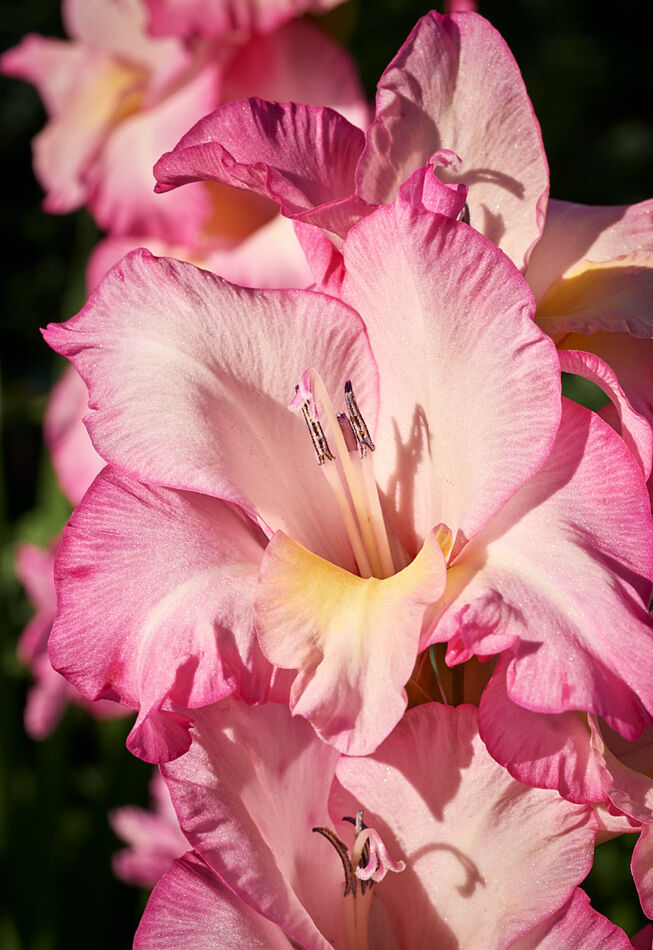How do vintage lenses work on modern cameras?
Oct 21, 2022 10:22:23 #
I’m asking out of curiosity, not a desire to actually use vintage lenses. From what I’ve read it is possible to shoot in aperture priority with a vintage lens. My question is how would the camera know to change the shutter speed given that there is no communication with the lens when you change your aperture?
Thanks,
Ben
Thanks,
Ben
Oct 21, 2022 10:32:47 #
You do it with a mirrorless digital. Not a DSLR.
With a mirrorless, you set the camera to release the shutter without detecting a lens. With a mirrorless, you set the EVF to show the expected exposure. Assuming an IBIS-enabled MILC, you set the IBIS support to the focal length (primes are easier) of the vintage lens used.
I prefer shutter priority with auto ISO, as this allows me to manually control both the aperture on a non electronic lens and the camera shutter speed, letting the camera manage the ISO. I can put my attention on the framing and the effort of manual focus.
In the config above, if you change to aperture priority with / without AUTO ISO, now the camera is managing the shutterspeed, and maybe the ISO, where you're just managing the aperture. The mirrorless camera doesn't know the aperture; it just meters the light hitting the sensor. In bright light, the camera knows what to do. But in lower light, the camera might not respond as needed, where in shutter priority you have the needed control of the speed vs the situation and / or the focal length, even with the IBIS support.
You just need the mount adapter of the lens mount to the camera mount.
With a mirrorless, you set the camera to release the shutter without detecting a lens. With a mirrorless, you set the EVF to show the expected exposure. Assuming an IBIS-enabled MILC, you set the IBIS support to the focal length (primes are easier) of the vintage lens used.
I prefer shutter priority with auto ISO, as this allows me to manually control both the aperture on a non electronic lens and the camera shutter speed, letting the camera manage the ISO. I can put my attention on the framing and the effort of manual focus.
In the config above, if you change to aperture priority with / without AUTO ISO, now the camera is managing the shutterspeed, and maybe the ISO, where you're just managing the aperture. The mirrorless camera doesn't know the aperture; it just meters the light hitting the sensor. In bright light, the camera knows what to do. But in lower light, the camera might not respond as needed, where in shutter priority you have the needed control of the speed vs the situation and / or the focal length, even with the IBIS support.
You just need the mount adapter of the lens mount to the camera mount.
Oct 21, 2022 10:33:58 #
Oct 21, 2022 10:38:47 #
The camera wouldn't know to change the shutter speed. You would do that manually.
Oct 21, 2022 10:48:39 #
SonyA580 wrote:
The camera wouldn't know to change the shutter speed. You would do that manually.
There it is. So people who use vintage lenses on their mirrorless cameras cannot in fact shoot aperture priority. It sounds like manual only, which is what I expected.
Oct 21, 2022 10:54:42 #
CHG_CANON wrote:
You do it with a mirrorless digital. Not a DSLR. b... (show quote)
Thanks so much, Paul!
Oct 21, 2022 10:55:08 #
Fotoartist wrote:
Manual, or Auto ISO should work.
That’s what I thought. Thank you.
Oct 21, 2022 11:11:58 #
Ysarex
Loc: St. Louis
Rab-Eye wrote:
There it is. So people who use vintage lenses on their mirrorless cameras cannot in fact shoot aperture priority. It sounds like manual only, which is what I expected.
No. Aperture priority works just fine. You have to stop the lens down to take the photo. So the process takes an extra step and makes best sense on a tripod. I do a fair amount of flower closeups in my wife's garden. One of my favorite lenses for doing that is a 60mm Rodagon enlarging lens that I use on my Fujis. Camera on a tripod. I set up the photo and then open the lens aperture to focus. To take the photo I stop the lens down to the f/stop I want to use and then let the camera set the shutter in A priority.
One of the great things about mirrorless is that you can mount damn near anything out front. Just for fun I ordered a step ring that let me mount an old shutter mounted Componon on my X-T2. It's a good lens and takes a decent photo.
Oct 21, 2022 11:13:08 #
CHG_CANON wrote:
You do it with a mirrorless digital. Not a DSLR. b... (show quote)
I can do it with my Pentax K-x and K-70, both DSLRs. In the menu there is an option to permit the shutter to release when the aperture ring is or is not not set to A(utomatic).
Oct 21, 2022 11:31:21 #
mwsilvers
Loc: Central New Jersey
CHG_CANON wrote:
You do it with a mirrorless digital. Not a DSLR. b... (show quote)
"With a mirrorless, you set the camera to release the shutter without detecting a lens."
That is correct for many mirrorless cameras, however, Nikon Z cameras are different. If you mount a manual focus lens to a Nikon Z, it automatically detects it and sets the shooting mode to MF, manual focus, without changing any settings and you're ready to start shooting. Of course make sure that the focus peaking feature is turned on, but that is similar to all camera brands. These days I shoot primarily with manual focus prime lenses on my Nikon Z fc.
Oct 21, 2022 11:39:36 #
Ysarex wrote:
No. Aperture priority works just fine. You have to... (show quote)
OK. Half of that I understand. I was not thinking that the aperture would close down until the shutter was released, but you have resolved that. The remaining question is even with the lens stopped down, how does the camera select the shutter speed? it must be from the light hitting the sensor, correct?
Oct 21, 2022 11:52:52 #
Ysarex
Loc: St. Louis
Rab-Eye wrote:
OK. Half of that I understand. I was not thinking that the aperture would close down until the shutter was released, but you have resolved that. The remaining question is even with the lens stopped down, how does the camera select the shutter speed? it must be from the light hitting the sensor, correct?
Yes, The camera meters the light intensity with the aperture stopped down to the taking f/stop and sets the shutter speed. It's working the same way it would for a lens that is made for the camera. If you're using a Fuji lens the aperture stays open for viewing until the moment of exposure. The camera meter simply receives two info points; 1. The lens max aperture wide open and 2. the lens aperture setting for when the picture will be taken. It calculates the difference to inform you of what the shutter speed will be. If instead there's no communication between the lens and camera then the camera skips that calculation step and just meters the scene and sets the appropriate shutter speed directly.
Working with the lens stopped down is a nuisance and an extra step but in something like tripod mounted closeup and macro work it's pretty minor. For me it's more than worth it because that 60mm Rodagon enlarging lens makes a fabulous macro lens. I'll go look for a photo from it.
Photo below is one of my wife's glads. Taken with my 60mm Rodagon on Fuji X-T2. The Rodagon was left over from my darkroom days. I had to purchase a helical focusing adapter (about $50.00) and an adapter step ring. I could instead buy the Fuji macro lens and then I wouldn't have the aperture stop down problem but I doubt the Fuji lens is as good.
Oct 21, 2022 12:01:51 #
Ysarex wrote:
Yes, The camera meters the light intensity with th... (show quote)
Thank you so much. Your replies have been extremely informative and helpful!
Oct 21, 2022 12:21:15 #
Rab-Eye wrote:
There are many variables, the camera type and interface, the type of lens, vintage. You could find you can use some of the electronics features or none. If there is NO communication camera to lens, then Auto-exposure modes like aperture priority, are not going to work.I’m asking out of curiosity, not a desire to actually use vintage lenses. From what I’ve read it is possible to shoot in aperture priority with a vintage lens. My question is how would the camera know to change the shutter speed given that there is no communication with the lens when you change your aperture?
Thanks,
Ben
Thanks,
Ben
Oct 21, 2022 12:23:51 #
zug55
Loc: Naivasha, Kenya, and Austin, Texas
mwsilvers wrote:
I "With a mirrorless, you set the camera to... (show quote)
This is how it works on my Sony A7III as well. It automatically goes into a manual focus mode, and I focus manually using focus peaking. I generally shoot in aperture priority. I manually set the aperture on the lens. The camera of course does not know the f-stop I chose, but it reads the amount of light that comes through the lens and adjusts ISO and exposure time accordingly, depending on the settings I chose. So this is a simple process. This obviously does not work in DSLRs because the sensor does not read the light that comes through the lens.
If you want to reply, then register here. Registration is free and your account is created instantly, so you can post right away.







